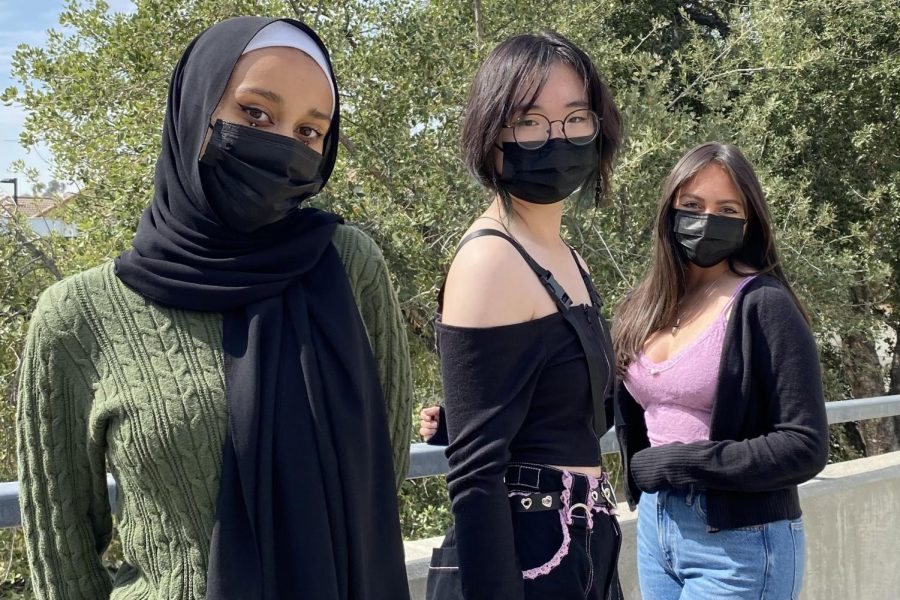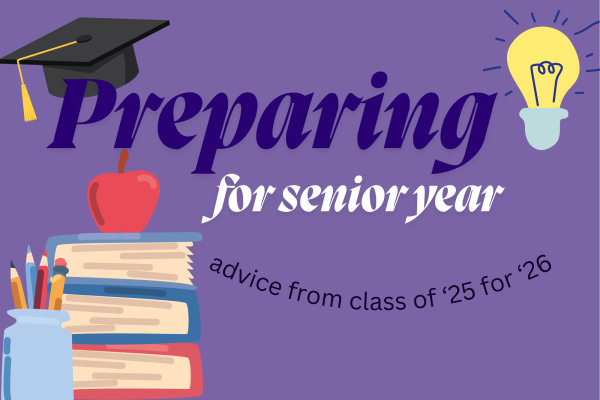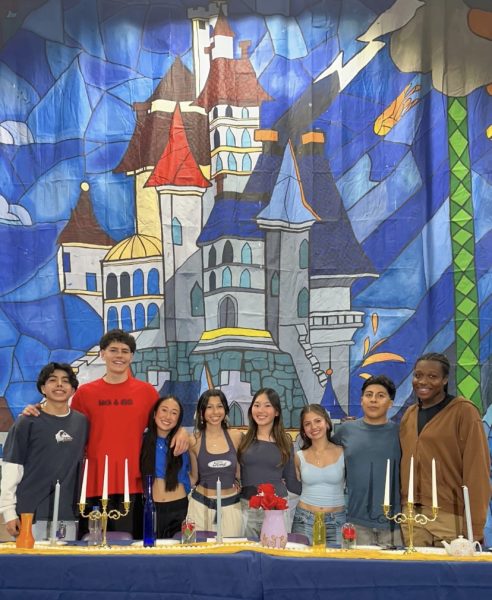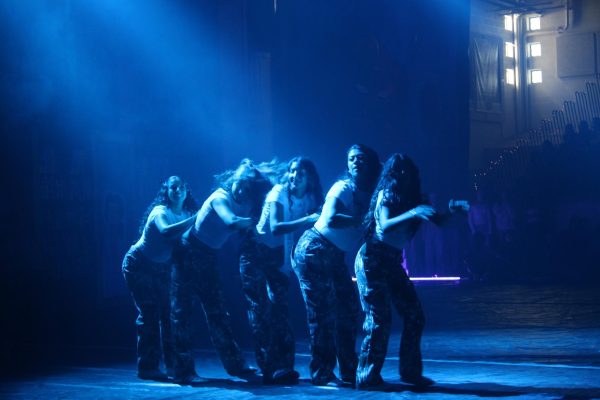How students can achieve their dream fashion styles
Photo of Noor Muhammad, Catherine Han, and Clarissa Avila in their styles.
Rancho Cucamonga High School’s students have a range of different, unique fashion styles. Whether it’s grunge or indie, feminine or masculine, ’90s or 2000s-inspired, all styles are unique and can be personal to each individual.
Many factors can contribute to someone’s style. Students can find their style through a combination of their identity, personality, culture, and community. Students also can start finding their style by creating a vision board of their inspirations and favorite clothing pieces from fashion magazines or photo sharing websites like Pinterest. Experimenting by shopping to find out what you like can also develop a sense of style. Personal fashion styles change throughout seasons, ages, and even phases, but it is best to have an idea of what you love, like, dislike, or hate.
Students can start developing their sense of style through their identity and personality. Students can try to create a style color palette, like character designs in media. Style color palettes are a selection of colors chosen to complement or build off one another while also providing a reflection on one’s personality or identity. A style color palette can be completely customized, starting off with the basics: neutral colors, complementary colors, and accent colors. Neutral colors can start as a base for an outfit—think white, black, and nude shades. Complementary colors are colors that complement the base, skin tone, or hair. Accent colors make a style unique. You can also consider staple colors or a color you love wearing when creating a style color palette.
Developing a palette makes it easy to create outfits that reflect on personality and identity. Students can then build onto their palette by noting what types of tops, bottoms, shoes, and accessories they want to wear specifically or developing sub palettes for different styles they want to try.
Senior Clarissa Avila describes her personal style as “neutrals with pops of color and lots of fun accessories to make the outfit complete.” Avila also describes her staple pieces, “long skirts, low-waisted flare pants, chunky shoes, and tank tops with jackets. I accessorize with cute socks, lots of silver rings, short necklaces, and I always wear my staple small hoop earrings.” Avila draws inspiration from fashion in the ‘70s, ‘90s and 2000s.
Students can look for inspiration in fashion magazines or photo sharing websites like Pinterest or Instagram.
Sophomore Noor Muhammad described her style as “fairy grunge,” which is a popular substyle of “soft grunge.” It’s part ‘90s, part 2000s with aspects of fantasy — tree greens, browns, skirts, and layering with mittens/gloves, leg warmers, tights make the style distinguishable. Accessories that are popular amongst the style include crystal and silver jewelry. The style is also one of the most accessible along with its substyles, grunge and “fairycore” as these styles help encourage buying or upcycling second hand clothing.
“I definitely first fell in love with it on Pinterest. I love the earthy tones and the slightly worn-out look, so I started thrifting because that’s what everyone who wears this style does. I basically bought a bunch of basics for layering—cardigans, long sleeves, anything like that,” said Muhammad. “Silver, chunky rings, big shiny charms, anything that pops because it adds such a nice contrast to the more warm earthy tones of the style I wear. Also, arm and leg warmers are so cute, and dark or earth toned bags are a must!”
Gathering inspiration photos from magazines or photo sharing websites can help the development of a style color palette or give ideas on what you want to incorporate into your own personal style. Students can also try creating a mood board of a style they’re trying to achieve. A mood board is a way to set up a visual for what you want your style to look like. It’s an effective way to lay out ideas quickly by arranging existing images or text to envision the style that you’re looking for. Working with a style color palette and a mood board can really help develop a sense of individual and personal style.
Students can also use their knowledge of their culture and community to develop a sense of style. Sophomore Catherine Han described her style as East Asian alternative as most of her styles are really popular in or originated in East Asia, “I achieved my style through the Asian media I consume, a lot of it comes from art of original or fictional characters,” Han said. “I love myself a nice tie, bow tie, or choker around my neck. It’s just the easiest to accessorize, along with earrings, which I also wear.”
Students can also experiment by shopping to find out what they like. While shopping, decide if you love the piece of clothing in question and can see yourself re-wearing it or styling it again and again. Students can try thrifting or buying second hand on websites like Depop or thredUP.
Muhammad shares her fashion tips, “Definitely dress in what makes you happy and stop caring about what other ppl think. I know it can be hard, but once you start dressing for yourself, you feel so much more comfortable and happy.”
“Also, try new things and clothing combos. You never know if you might find something you like that you would have never paired before, and try thrifting if you don’t really know what you’re looking for.” said Muhammad.
Avila shares, “Accessorize to add more flare to any outfit. Go thrifting to find unique cheap pieces. Just have fun with it. Fashion is so versatile. Wear what makes you feel good and confident.”
Han shares, “You need self-confidence to do this, but you won’t be gaining any if you don’t start, so start. Go slow at first, like just coming up with an outfit the night before you go to school using what you already have in your closet.”
“With some thought, you’d probably be able to come up with something good. Once you’re used to putting thought into your outfits, then you can start buying new clothes, get better at styling, and learn about your style while you’re at it. The compliments and sweet people you’ll meet makes it worth it, I swear,” said Han.






